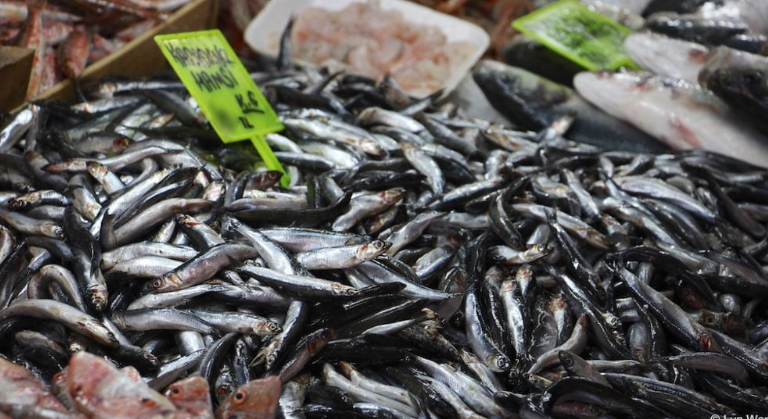Hamsi: More Than Just a Fish
Hamsi, known globally as anchovies but cherished deeply in Turkey’s Black Sea region, is much more than a seafood delicacy—it is a symbol of local identity and a staple at tables both humble and grand. This small, shimmering fish has woven itself into the fabric of the community, celebrated in songs, poems, and time-honored recipes that showcase its versatility and cultural weight.
The Abundance of Hamsi in Turkey’s Black Sea
Turkey is surrounded on three sides by sea, boasting a bountiful supply of fish. While seafood is not the primary dietary focus throughout the entire country, coastal communities, especially those along the Black Sea, have developed a remarkable creativity in preparing fish. Hamsi stands out as a regional treasure, particularly abundant during the winter months when the waters teem with these tiny silver fish, between 12 and 15 centimeters long.
A popular local saying captures the hamsi experience perfectly: “Foreigners eat hamsi without bones, but the people of the Black Sea eat it whole.” This highlights a distinctive cultural practice where the fish is often consumed pan-fried whole, bones and all, delighting those who appreciate its full flavor.
Hamsi Preparations: At a Glance
| Dish | Preparation Method | Key Ingredients |
|---|---|---|
| Fried Hamsi | Simple pan-frying after coating in flour | Fresh hamsi, flour or cornflour, vegetable oil |
| Hamsili Pilav (Hamsi with Rice) | Rice pilaf layered with deboned anchovies and baked | Fresh anchovies, white rice, onion, currants, pine nuts, dill, spices |
| Pickled Hamsi | Fish preserved in vinegar and oil with herbs, stored long-term | Hamsi, vinegar, vegetable oil, bay leaves, lemon |
The Delight of Fried Hamsi
The simplest and most beloved way to enjoy hamsi is fried. After a quick rinse, the fish is dusted in either regular or corn flour and gently fried in a generously oiled pan until crisp and golden on each side. This method preserves the fish’s delicate texture and highlights its natural flavors — perfect for a quick meal or a shared appetizer at a seaside table.
A Royal Tradition: Hamsili Pilav
Hamsili pilav carries a bit of history on its plate. This dish has roots in the Ottoman imperial kitchens where sultans enjoyed their anchovies paired with a special rice pilaf. Today, the tradition thrives especially among the Laz people of northeastern Turkey’s Kaçkar mountains, where the dish combines aromatic rice with pine nuts and currants layered between tender, deboned anchovies and baked to perfection.
Ingredients for Hamsili Pilav
- 1 kg fresh whole anchovies
- 1.5 cups white rice
- 1 large onion, finely chopped
- 1/3 cup currants
- 1/4 cup pine nuts
- 2 tablespoons vegetable oil
- 1/2 cup chopped dill
- Salt and black pepper to taste
Preparation Summary
Start by sautéing pine nuts and onions until soft and golden, then toast the rice with the mixture before adding currants, dill, and seasoning. After cooking partially with water, assemble the pilaf and layers of deboned anchovies in a casserole, baking gently until fully cooked and aromatic.
Pickling Hamsi: A Black Sea Specialty
Going beyond cooking, the Black Sea locals have a special knack for preserving hamsi by pickling them. The fish, thoroughly cleaned, is marinated in vinegar and oil with added bay leaves and lemon slices for extra zing. These pickles keep well for over a year if stored in a dark, cool place or in the refrigerator, offering a tangy, flavorful addition to meals throughout the year.
Why Hamsi Matters Beyond the Plate
As a cultural icon and culinary delight, hamsi not only flavors the cuisine of the Turkish Black Sea region but also influences social and economic activities, including fishing practices and local traditions. For travelers arranging airport transfers or city rides in Turkey, especially near coastal areas, understanding regional specialties like hamsi can add richness to one’s journey. Platforms like LocalsRide.com allow users to pick their ride and driver with exact knowledge of vehicle type and ratings, enhancing travel experiences to destinations known for such local delicacies.
Підсумок
In sum, hamsi is Turkey’s national fish celebrated for its cultural significance and culinary versatility. From the straightforward pleasure of fried anchovies to the layered complexity of hamsili pilav and the uniquely preserved pickled versions, hamsi remains a potent symbol of the Black Sea region’s heritage. Whether for locals or visitors, experiencing this fish is like tasting a piece of Turkey’s soul. For those planning trips around Turkey’s coastal cities, understanding local culinary highlights like hamsi adds that special zest to the journey.
The highlights of hamsi culture showcase how food traditions elevate everyday life, intertwining history, nature’s bounty, and community spirit. While reviews and stories provide insights, nothing truly compares to personal experience – trying these dishes firsthand is the ultimate discovery. On LocalsRide, travelers can hire cars with drivers from verified providers at reasonable prices, choosing from a broad selection of vehicles and optional services, all with transparent pricing. This makes every journey both affordable and comfortable. Забронюйте поїздку LocalsRide.com.
Looking ahead, the steady popularity of hamsi and its culinary heritage underscores its role in Turkey’s tourism magnetism, especially for food lovers. While its individual global impact might be modest, it remains a treasured part of local culture and cuisine. LocalsRide keeps pace with these traditions, supporting travelers in discovering authentic experiences with ease. Start planning your next adventure and secure your worldwide transfer with LocalsRide.
From airport pickups to city cabs, the convenience of booking with platforms that provide exact vehicle and driver details as offered by LocalsRide ensures peace of mind and adds to the joy of exploring destinations celebrated for their distinctive flavors and cultural richness – hamsi being a prime example.

